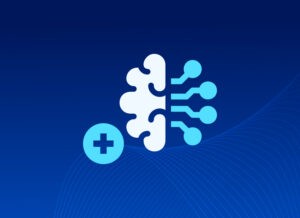A Government’s ability to lead, protect and serve is tied to how boldly it embraces technology. Artificial intelligence (AI) is no longer a distant concept. It’s a force already redefining the way agencies operate, safeguard resources and deliver services. In an era where global competitors are racing ahead with automation and advanced analytics, standing still is not an option. Agencies that adopt AI strategically will not only keep pace but set new standards for effectiveness, transparency and citizen trust.
Key Use Cases for Artificial Intelligence in Government
Across the Public Sector, AI is moving beyond pilot projects into critical programs. Government agencies are weaving AI into their daily operations. They are detecting fraud before it drains budgets, automating compliance that once accounted for many staff hours and analyzing risks too complicated for manual review. The practical applications are real, measurable and growing. What once seemed like gradual innovation is quickly becoming a foundation for modern governance.
Common AI use cases in Government include:
Fraud detection and prevention
The U.S. Government loses between $233 billion and $521 billion a year to fraud. While no agency is immune to fraud, AI is helping the Government fight back. For example:
- The Treasury Departmentuses machine learning to detect fraud in real time, enabling it to recover over $4 billion in fraudulent funds during fiscal year 2024.
- The Centers for Medicare & Medicaid Services (CMS)has integrated AI in its fraud prevention system to review claims before payment. Between January and August 2025 alone, it denied over 800,000 fraudulent claims, saving more than $141 million.
- The IRS uses AI-powered tools, such as the Risk-Based Collection Model, to improve fraud detection and reduce the tax gap.
Compliance reporting
Compliance is time-consuming for agencies, but AI is now automating much of the process. Agencies use AI to monitor real-time data and flag inconsistencies to simplify reporting. With these capabilities, AI enables greater transparency and faster responses to regulatory requirements.
While AI doesn’t replace human oversight, it frees staff to focus on higher-value analysis, cutting the time and costs of compliance. A good example is the Securities and Exchange Commission’s (SEC) use of natural language processing to automate reporting for financial markets. It processes millions of filings and generates compliance reports to improve enforcement efficiency.
Risk management
Government programs face constant risks:
- Operational
- Financial
- Security
- Environmental
- Third-party exposure
AI in Government is already helping agencies with minimum risk management practices. For instance, automating third-party risk management with AI-enabled Governance, Risk and Compliance (GRC) platforms helps agencies assess vendor reliability and track compliance to reduce exposure.
Supply chain monitoring
The COVID-19 pandemic revealed the vulnerability of the public supply chain. AI is now helping the Government strengthen resilience with real-time monitoring.
Machine learning models predict bottlenecks to help agencies optimize their logistics. Additionally, enhanced visibility allows policymakers to proactively mitigate third-party risks in the supply chain, as they can monitor vendors and flag vulnerabilities before they escalate.
Policy cycle integration
Public policies move through cycles: setting the agenda, designing solutions, implementing programs and evaluating results. AI has a role at each stage.
| Policy cycle stage | AI’s roles |
| Agenda-setting | Analyzes citizen feedback and emerging trends to identify priorities |
| Solution development | Models the likely impact of different policy options |
| Implementation | Automates program operations |
| Evaluation | Measures outcomes against goals |
Used thoughtfully, AI makes the policy cycle more evidence-driven and adaptive.
Citizen services
According to a 2024 Salesforce report, 75% of Americans expect Government digital technologies to match the quality of the best private sector organizations. To meet these expectations, U.S. and State Government agencies are using:
- Chatbots to answer common questions and improve the availability of Government services
- Digital assistants to provide personalized help and handle more complex inquiries
- Self-service portals to let citizens complete tasks like renewing licenses on their own

Benefits of Artificial Intelligence in Government
Beyond mere modernization, embracing AI in Government delivers measurable value:
Increased efficiency and productivity
According to a 2023 McKinsey report, generative AI can automate 60%–70% of tasks and add $2.6–4.4 trillion annually to global productivity. Federal and State agencies are using AI to reduce repetitive tasks such as data entry and document reviews to free Government employees’ time for more strategic efforts. This shift in focus raises productivity without adding headcount.
Improved strategy
Insights from AI help policymakers see the bigger picture. Agencies use predictive analytics to forecast outcomes and test scenarios so they can design public policies to prevent undesirable outcomes to begin with, instead of just reacting to them.
Greater responsiveness
AI makes public services more responsive. Examples include agencies using chatbots to answer citizens’ questions and sentiment analysis tools to better listen to community concerns.
Implementation Challenges that Hinder the Strategic Use of AI in Government
While AI is already delivering results in Government agencies, several obstacles hinder its broader adoption.
Skill gaps and training
A 2024 Salesforce survey found that 60% of Public Sector IT professionals say limited AI skill is their top challenge in implementing AI.
Data biases and ethics
AI learns from data that often reflects existing societal inequities, which can perpetuate or even amplify bias.
Data management
Many agencies rely on siloed or outdated systems. In fact, the Federal Government faces a $100 billion legacy IT challenge, making it difficult to integrate and secure data effectively.
Public trust
Government agencies are expected to operate with a high degree of accountability and transparency. Public skepticism, shaped with legitimate concerns about bias and privacy, may stall or derail AI initiatives.
The Way Forward: Building Smarter, Trustworthy Public Programs
The potential of AI in Government is huge, but so are the risks. To enjoy the benefits while protecting public trust, it’s important to follow best practices for managing AI risks:
- Treat AI as a strategic asset that drives smart, citizen-focused outcomes, rather than just a technical tool.
- Pair AI with human oversight to address biases and provide context in decision-making, so the outcomes remain fair and ethical.
- Invest in responsible governance frameworks to guide the development and deployment of AI within your agency.
- Monitor AI continuously after deployment to address any unintended consequences.
Managing AI in GRC Solutions
- Explore how to integrate AI responsibly into GRC programs
- Download our e-book to learn more about evaluating GRC solutions in the Public Sector







